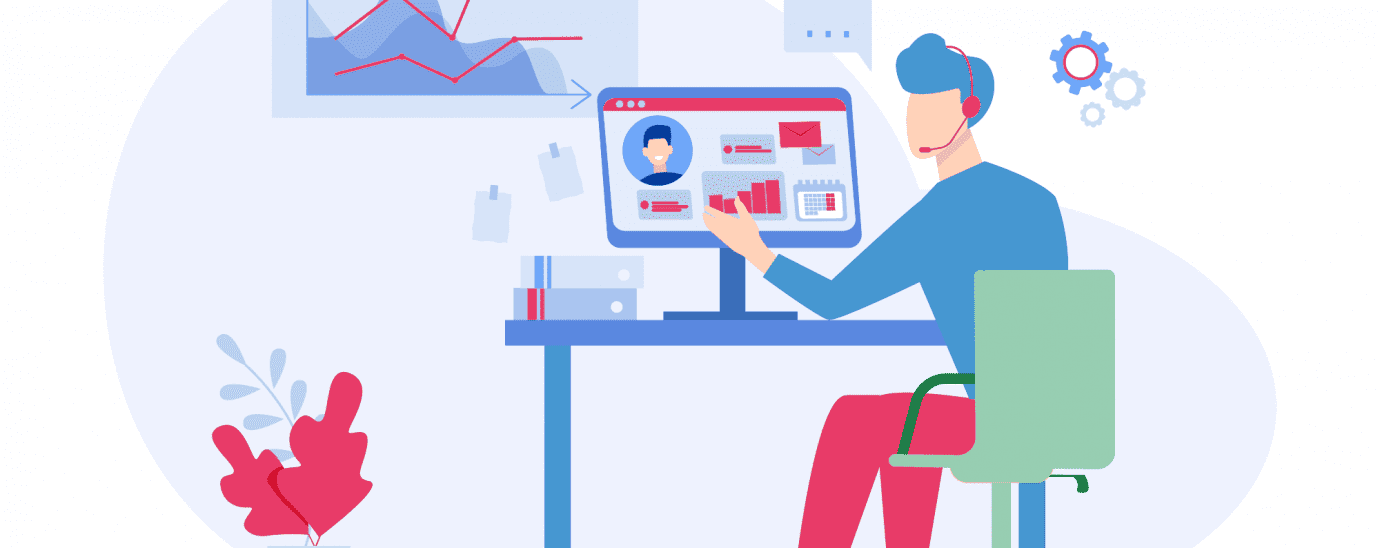Contact centre automation is one of the main trends in CRM today

Tomáš Řehoř, Head of Engineering at Pipedrive, tells Top Business Tech why contact centre automation is at the heart of CRM trends in the industry today.
The field of CRM is a competitive, growing space. Everyone providing services talks about providing best-in-class customer experiences, about CRM strategies and solutions, and about the vital role CRM plays in catapulting companies forward as marketplace demands intensify. It’s relevant across the whole economy, but in one crucial area of sales CRM has an outsized influence – in the changing make-up of contact centres, customer centers, call centers, helpdesks – and all aspects of customer support, through automation.
Customer experience
Firstly, business revolves around the empowered customer today more so than ever before, making the customer experience (CX) a vital brand differentiator. Large enterprises are in an area of competitive investigation – developing sophisticated solutions like conversational chatbots inspired by neural networks to better meet customer needs.
Smaller enterprises struggle to streamline the work of their contact centers. Though they usually do not have the same access to complex tools, they can use existing solutions and apply the maximum data they have access to, with all necessary caller data in one place, one click away. Conversion of conversation to text allows teams to obtain customer data using text searches, and better apply logic to the data.
Even small companies can use chatbots for repeated, formulaic inquiries, too. The chatbot is like a more user-friendly FAQ page that speeds time-to-answer. The trend is for greater interactivity in advanced chatbots: E.g. sending a customer a catalogues or digital products, invoices or links to payment, all with one click.
Sometimes though it is better using web applications to solve a specific problem. For smaller companies it is ideal if the customer interface links directly with the CRM. When deciding which option is better, the goal should always be to increase user comfort – and thus conversion.
A chatbot should allow a smooth transition to a live chat, call or video call. The customer must get the experience that makes their lives comfortable.
Artificial intelligence
AI is not only here – in use across industries at present – it’s experiencing the major growth analysts have forecast for years. AI in the contact centre, for example, will act as a CRM tool that companies can use to more effectively manage their changing and ongoing relationships with customers. AI will be able to create ‘personalised agents’ that, through the power of machine learning, can discover and unlock the needs and wants of users in smarter automated assistance solutions.
The ability to understand, predict, and engagingly support customers is so important, and forms one of the most memorable parts of the customer experience. Companies relying on contact centres for managing customer relationships must ensure that their AI is well trained on real, diverse data; that it avoids the pitfalls that bugged early AI solutions; and that it truly is designed with the customer in mind – not only the ‘perfect’ use case the operators would like to see.
An AI-powered ‘sales mentor’ could, for example, be used without risk to boost performance with personalised tips so sales executives can rapidly process the most optimal routes to success. By analysing past performance such solutions can flag risks to attention and suggest new ways to boost your results – all in the CRM.
Integration
The evolution in the Internet of Things (IoT) is ensuring significant advancements in the CRM market. It will improve system performance, enhance customer service and increase sales. IoT/CRM integration will provide a platform for companies to take advantage of feeding more data into the system for deeper insight that leads to more strategic marketing efforts.
Consultants can also benefit from tapping into this well: CRM systems can do the hard work, helping consultants collect data on every call, email and task, and then create reports that help to formalise activities.
So, to conclude, we see machines replacing people in a number of routine and frequently less enjoyable activities. They then focus on increasingly sophisticated activities – and so will contact centers: Manual rewriting and replenishment will be eliminated – machines will take care of basic interactions, care and quality support. Now timing is key. Human interaction must come at the right moment.
Modern CRM in the future as a universal digital tool that can automatically perform assigned tasks. You can imagine a robot suit that makes a user a superhero… They won’t have to fly and fire mini missiles, but they will have data and information at their disposal – and they can easily interpret and make better decisions easier, based on them. Thanks to this, the trader will be able to offer the right product or service, and in an instant, connect the customer to the right expert who will solve his problem.
For more news from Top Business Tech, don’t forget to subscribe to our daily bulletin for the latest technology news!
